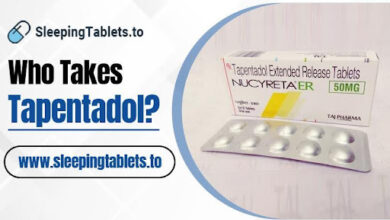Improving Retrospective Risk Adjustment Through Advanced HCC Capture Techniques

Introduction: The Challenge of Accurate HCC Capture in Retrospective Risk Adjustment
It was a routine morning for Sarah, a seasoned medical coder at a bustling healthcare organization. She was deep into the process of reviewing patient records from the previous year, tasked with ensuring that every relevant Hierarchical Condition Category (HCC) had been accurately captured. Despite her experience, Sarah found herself overwhelmed by the volume of records and the complexity of accurately capturing each HCC. As she sifted through the data, she couldn’t help but feel the pressure—every missed HCC meant potential financial loss for the Medicare Advantage plan, not to mention the risk of audits and penalties.
This scenario is all too familiar for healthcare providers and Medicare Advantage plans. The retrospective risk adjustment process, which involves reviewing and capturing HCCs after the care has been provided, is fraught with challenges. Yet, accurate HCC capture is crucial for ensuring appropriate reimbursement and maintaining the financial health of Medicare Advantage plans. In this context, advanced HCC capture techniques are emerging as essential tools for improving accuracy, efficiency, and ultimately, patient care.
The Importance of Advanced HCC Capture in Retrospective Risk Adjustment
Retrospective risk adjustment plays a vital role in the financial stability of Medicare Advantage plans. By accurately capturing HCCs, these plans can secure the appropriate reimbursements needed to manage the health of their patient populations. However, the complexity of the process—compounded by the sheer volume of patient data—often leads to errors, missed HCCs, and incomplete coding. This not only affects reimbursement rates but can also trigger audits and penalties from the Centers for Medicare & Medicaid Services (CMS).
Moreover, accurate HCC capture is essential for reflecting the true health status of patients. When HCCs are missed or inaccurately coded, it can lead to underestimation of patient risk, which in turn affects care planning and resource allocation. On the other hand, overcoding or inappropriate HCC capture can lead to overpayment, putting the organization at risk of compliance issues. Therefore, improving the accuracy of HCC capture during retrospective risk adjustment is critical for both financial and clinical outcomes.
Advanced Techniques for Enhancing HCC Capture
Given the stakes, it’s clear that traditional methods of HCC capture may no longer be sufficient. Healthcare providers and Medicare Advantage plans must adopt advanced techniques that leverage technology, data analytics, and best practices to ensure accurate and efficient HCC capture. Here are some innovative approaches to consider:
1. Leveraging Natural Language Processing (NLP) and Artificial Intelligence (AI)
One of the most promising advancements in HCC capture is the use of NLP and AI technologies. These tools can analyze unstructured data within electronic health records (EHRs), such as physician notes and lab reports, to identify relevant HCCs that may have been missed during the initial coding process. By scanning through vast amounts of text data, NLP can uncover diagnoses, treatments, and other critical information that traditional coding methods might overlook.
AI-powered systems can also assist coders by suggesting potential HCC codes based on the data analyzed. This not only improves the accuracy of HCC capture but also reduces the time and effort required for manual chart reviews. By integrating these technologies into their workflows, healthcare providers can enhance the thoroughness of their retrospective risk adjustment processes, ensuring that no HCC goes unnoticed.
2. Implementing Predictive Analytics for Targeted Chart Reviews
Predictive analytics is another powerful tool for improving HCC capture. By analyzing historical data, predictive models can identify patients who are likely to have undocumented HCCs based on their clinical history and patterns in their care. This allows healthcare providers to prioritize chart reviews for these high-risk patients, ensuring that all relevant conditions are captured.
For example, predictive analytics can flag patients with chronic conditions who may have been under-documented in previous encounters. By focusing on these patients, coders can conduct more targeted and efficient chart reviews, leading to more accurate risk adjustment and appropriate reimbursement.
3. Utilizing Retrospective Chart Review Tools
Retrospective chart review tools are specifically designed to facilitate the HCC capture process during retrospective risk adjustment. These tools often include features such as automated coding suggestions, real-time error detection, and comprehensive audit trails. By providing coders with a streamlined interface and intelligent support, these tools can significantly enhance the accuracy and efficiency of HCC capture.
Moreover, retrospective chart review tools can be integrated with existing EHR systems, allowing for seamless data extraction and analysis. This reduces the burden on coders and ensures that all relevant patient data is considered during the HCC capture process.
4. Continuous Training and Education for Coders
While technology plays a crucial role in improving HCC capture, the human element cannot be overlooked. Continuous training and education for coders are essential to ensure that they are up-to-date with the latest coding guidelines, HCC categories, and best practices. Regular training sessions can help coders stay proficient in navigating complex patient records and applying advanced techniques to capture all relevant HCCs.
In addition to formal training, healthcare organizations should foster a culture of collaboration and knowledge-sharing among coders. This can be achieved through peer reviews, coding workshops, and access to resources that support ongoing learning. By investing in the professional development of coders, healthcare providers can ensure a high level of accuracy and consistency in HCC capture.
The Human-Centric Impact: Better Outcomes for Providers, Coders, and Patients
The adoption of advanced HCC capture techniques not only benefits healthcare providers and Medicare Advantage plans but also has a positive impact on patients. Accurate HCC capture ensures that patients’ health statuses are correctly reflected in risk adjustment calculations, leading to appropriate care planning and resource allocation. This, in turn, supports better patient outcomes by ensuring that healthcare providers have the necessary resources to manage complex conditions effectively.
For coders, the implementation of advanced HCC capture techniques reduces the burden of manual chart reviews and the risk of errors. By leveraging technology and data-driven approaches, coders can work more efficiently and with greater confidence, knowing that they are contributing to the financial and clinical success of their organization.
Conclusion: Advancing Retrospective Risk Adjustment with Innovative HCC Capture
In the rapidly evolving landscape of Medicare Advantage, the importance of accurate HCC capture during retrospective risk adjustment cannot be overstated. As healthcare providers and plans face increasing pressure to optimize coding accuracy and ensure appropriate reimbursement, the adoption of advanced HCC capture techniques is essential.
By leveraging technologies such as NLP, AI, and predictive analytics, along with continuous training and the use of specialized tools, healthcare organizations can significantly enhance the accuracy and efficiency of their retrospective risk adjustment processes. These innovations not only support the financial health of Medicare Advantage plans but also contribute to better patient care and outcomes.
As the industry continues to evolve, staying ahead of the curve with advanced HCC capture techniques will be critical for navigating the complexities of retrospective risk adjustment. By embracing these strategies, healthcare providers can ensure that they are well-equipped to meet the challenges of today and tomorrow, delivering high-quality care while maintaining compliance and financial stability.



